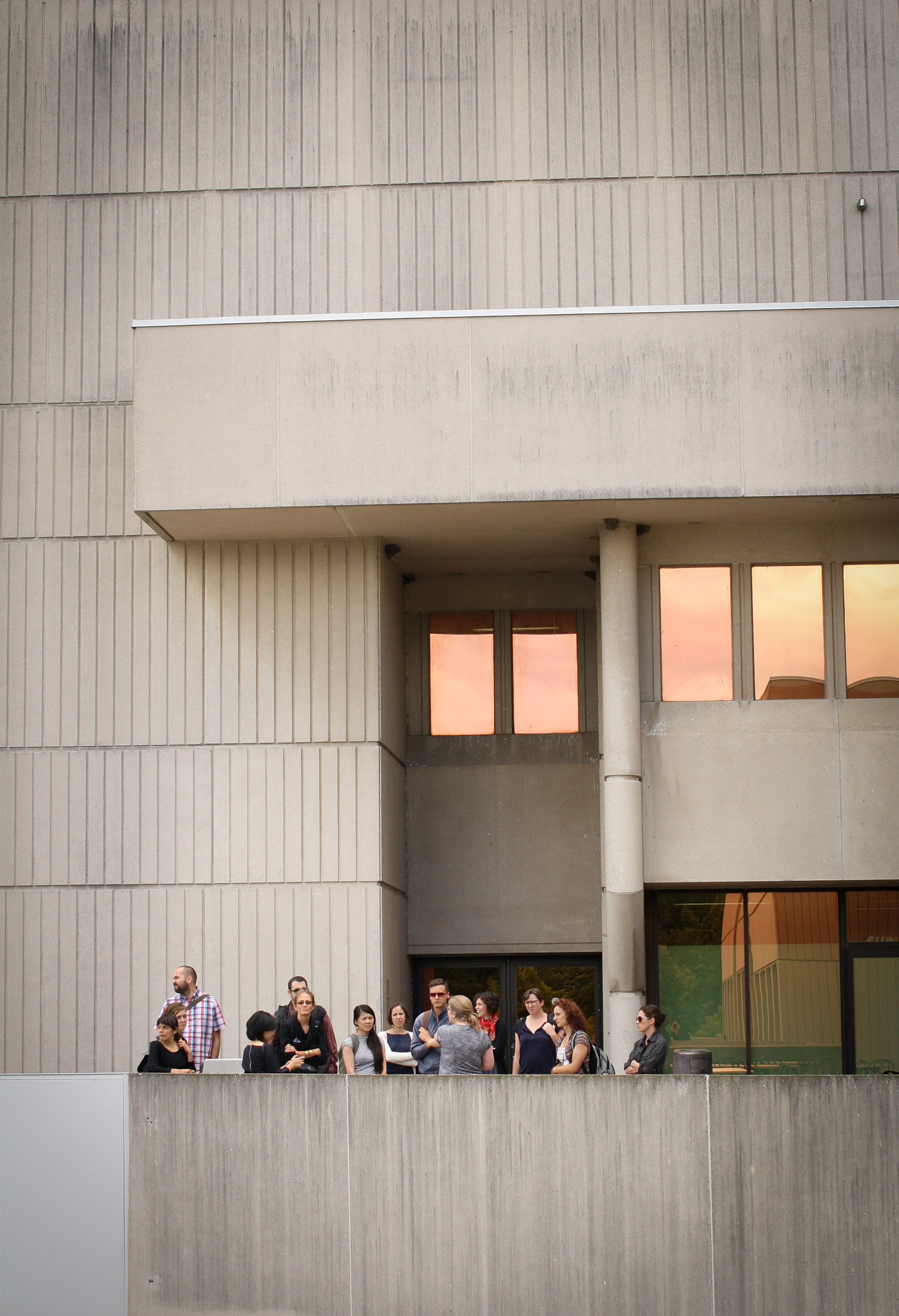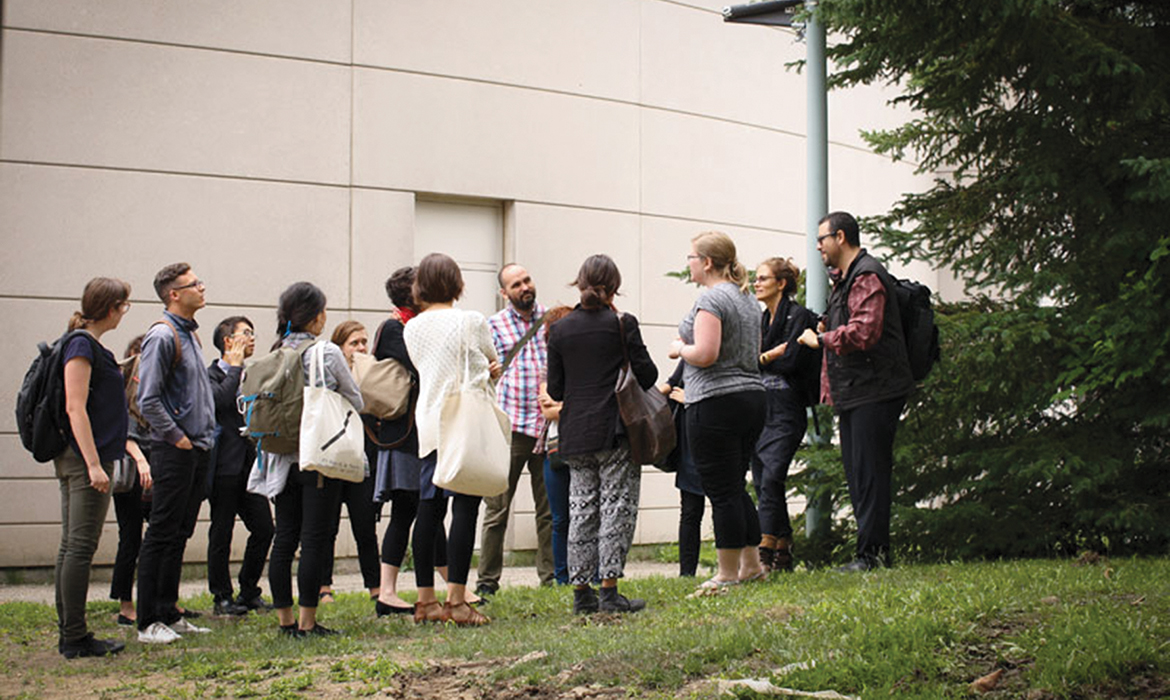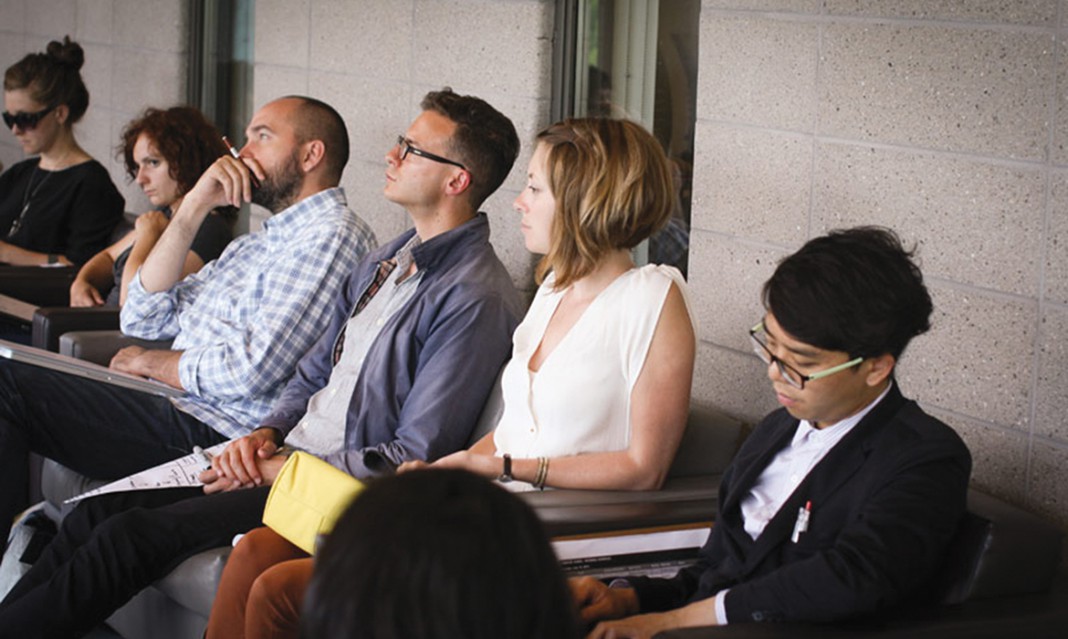Comfort Zones is an upcoming event at Blackwood Gallery that takes a step back from the traditional style to bring viewers a more in-depth look at the UTM campus.
Two stages of Comfort Zones will be presented to the public, the first having taken place back in July 2014 when Cohabitation Strategy members Lucia Babina and Miguel Robles-Durán led a series of workshops at UTM with students, staff, and faculty. The second stage will be a series of four walking tours of the campus led by UTM community members. The campus tours were designed by CohStra and curated by Yan Wu.
The Medium sat down with Wu to take a closer look at her project and the tours to be held from March 10 to 12.
Wu describes the project as a result of collaboration—a collective effort by Babina and Robles-Durán, the Blackwood Gallery, all the contributors, and herself.
“My curatorial interest is the intersection between public art, architecture, and urban design. Many of my projects explore the territory of this intersection and try to intensify the relationship between the placement of the project and the site,” Wu says. “Also, I had a background in computer science and software development before shifting to arts and culture, so I am always curious how to visualize the process and present it to the public.”
CohStra led tours last July during the initial research phase of Yan Wu’s curatorial project.
The research for this project began last summer when Wu and her contributors were preparing for CohStra’s first site visit and their social-spatial workshop on campus, says Wu.
“At the time, CohStra did their own research, which involved an empirical approach. The majority of my research was focused on UTM-related archives: the UTM archive at the library, Heritage Mississauga, archive of master plans on UTM website, and newspaper archives,” she adds. “I also interviewed a lot of UTM community members. This is how we found the tour guides.”
Wu explains that the tours are broken down into four categories based on the observations CohStra made during their first site visit last summer. “Through interviews held over the last few weeks, we selected the ideal tour guide for each group. Fortunately for us, our first picks all agreed to participate,” she says.
The decision behind who would lead the tours and what Comfort Zones would be touring came from several different experiences. “We were impressed by the amount of natural space on campus and were fascinated by the experience of taking that natural trail around Lislehurst,” Wu says. “So we wanted to know how much of this nature is wild, how much of it is built, and the history of the land. The starting point of our research was to look for the evidence of pre-contact that happened on this piece of land.”
Wu and company were introduced to Professor Gary Crawford’s work through Brian MacLean at First Story Toronto, a non-profit organization that gave a guided tour of aboriginal history in the Toronto area.
“It was Professor Crawford who introduced me to Michael Brand’s work and the archaeology field school he ran around Lislehurst in the past couple of summers,” Wu explains. “Through Michael, I met with historian Matthew Wilkinson at Heritage Mississauga and Professor Thomas Mcilwraith, who has been on campus for over 40 years and has developed a fascinating archive of campus history.”
Wu hopes to bring all of them to the Natural Traces Tour, with Brand guiding the main thread of the tour but also focusing on the importance of different voices and researchers.
The second tour was inspired by the beauty of the UTM campus, Wu says. The natural landscape and modern architectures are what drew Wu and fellow curators to delve further into the campus. “Through studying the master plans provided online, we understand the campus has been significantly expanded since 2000 in terms of the number of buildings and student enrolment,” Wu says. “It’s important to gather the perspective from the administration and to understand the big picture of the development. Coincidentally, I was connected to Paul Donoghue through my outreach to the Chair of Grounds Committee, Professor Linda Kohn.”
Wu went on to say that at the time, they were looking for a voice who could introduce them to the infrastructure and financing behind the campus development. “Nobody knows better than Paul does,” Wu admits. “We are very lucky that he is willing to participate.”
The third tour is based on Cohabitation Strategies’ on-going concern for labour conditions, Wu says. She and CohStra wanted to know more about the social and working conditions on campus, wanting specifically to hear it through the staff’s own voice in terms of their experience as opposed to the official rhetoric.
“Mary Atkinson from the library gave us an amazing tour of how she used the campus back in the summer as part of the social-spatial workshop ran by Cohabitation Strategies,” she says. “Mary studied at UTM and stayed to work in the library after. She showed us what her routine was like when she was a student and what facilities matter to her now as a staff member and a mother.”
For the tour, The Medium’s editor-in-chief, Luke Sawczak, suggested that Wu should meet with Chartwells employee Linda Stroble at Circuit Break Café, given that she is a well-known and beloved face on campus. “The tip was priceless,” Wu says. “I have been having lunch breaks with Linda regularly ever since. She has shown me a beautiful way to use the campus that I’ve never thought of.”

The last tour is based on student culture. “We wanted to work with a student group who could show us how culture is produced on campus,” Wu says. “We thought about a poetry society, a music appreciation group, or a game club. I have to say, the email list of student clubs provided on the student union’s webpage is somewhat out-of-date. I sent out a whole bunch of emails and nobody replied; some of the email accounts no longer exist.”
It was then that Wu decided to try Facebook, though she didn’t have much luck. “I was combing through all the CFRE radio programs and trying to find something there, but Luke introduced me to EDSS TV and Siddharth Singh,” she says. “We decided to have a behind the scenes tour of a live production of a student movie on campus. It’s perfect. Actually, the title ‘Behind the Scenes’ was inspired by this tour particularly.”
The idea for a tour format was a proposal by Cohabitation Strategies, Wu says. “They see the format of a guided walking tour as an effective tool for collective learning. The idea came from the two tours we did during the workshops last summer. According to the participants, the tours were everyone’s favourite experience and the best way to encounter the campus,” she says.
The first was led by Atkinson at the library, and the second by Kamila Swiderski and Andrew Wyszkowski, grounds service worker and student. The third was by Brand.
“The tour Michael Brand took me on around Lislehurst, learning the history of Lislehurst and Woodham, and seeing the marks left on the ground was a mind-blowing experience for me. One second you thought you were standing in an urban forest, the next you found out you were actually standing in what was once someone’s private garden,” Wu says. “The other great finding was the press coverage of the expropriation process of the campus land in 1963 from the Toronto Star archive.
“One of the most memorable tours was the one I gave to Greg Troy, the founder of The Medium and the [first president of the] student union,” she added.
There were several reasons why Wu and CohStra decided to come to UTM to hold these tours. “I decided very early on to work with the Blackwood Gallery because I knew that I wanted to learn more about the campus,” Wu says. “I was first attracted to the modern architectures here, from the mega-structure to state-of-the-art certified LEED, and wondered how it came about.”
Wu says that most importantly she’s interested in studying shared spaces on campus and how they are used. “I would like to study the potentials for them to become productive comfort zones, somewhere you don’t need to be pushed out of, and instead you can feel familiar with and can comfortably claim that you are part of it. I see that as an important condition to participate.”
Wu says that she also likes the fact that the Blackwood Gallery has a long history of supporting public intervention and site-specific kind of the project and artworks. “I’m interested in Christine Shaw’s work and am curious what she plans to bring to UTM. The best way to find out is to work with her,” she says, alluding to the importance of the experiential aspect of the tours.
Despite all the information that came from UTM, there were communication and commuting obstacles for Wu, who doesn’t live in Mississauga. She was away for the fall semester, and admits that a very limited amount of research could be done. “It was frustrating. It made me realize that it’s a project that needs to be produced in field, partly because the research requires local visits and partly because the process requires bodily immersion in the campus to understand its rhythm and pulse,” she says.
After each tour, says Wu, there will be experiential mapping exercises in which “everyone at the tour will be invited to contribute their own voice to the map”. The results of the exercises will be compiled and translated into one final map as the publication of the project. “The contribution of the participants is equally important as the tour guides,” she says. “We hope the project can reflect diverse voices of the campus.”
More on the free tours can be found here. To sign up, email yw.wu@mail.utoronto.ca by March 2.
Update: The deadline to sign up for the tours has been extended to March 6.




